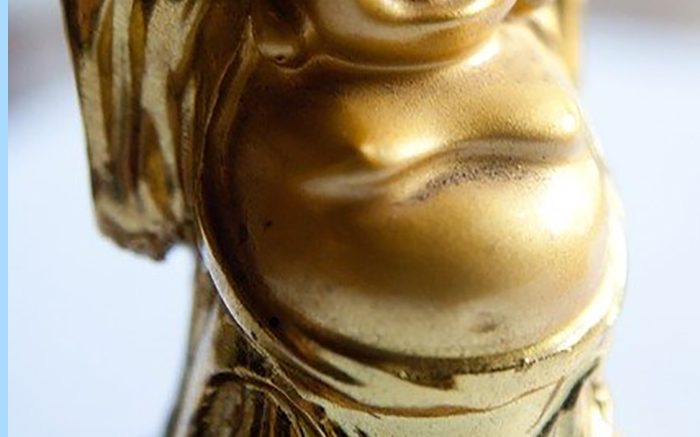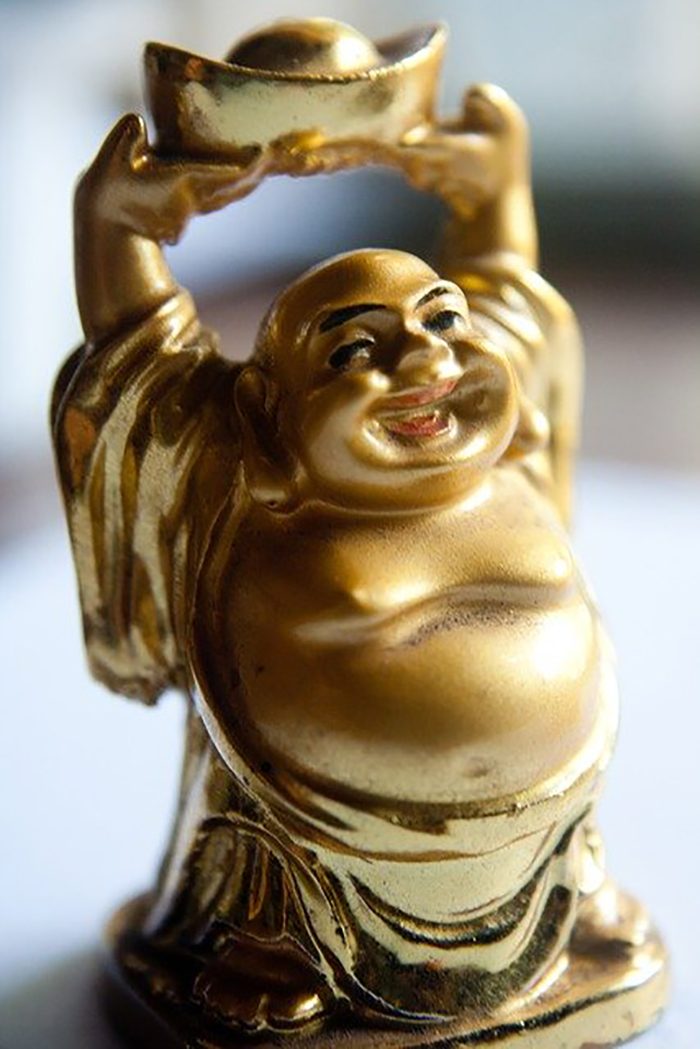The world seems to be divided into two:
The ones who love to parade their bellies around, with confidence and ease.
And the ones who constantly suck their bellies in, myself included, hiding that apparently inappropriate stomach bump.
There’s a plethora of events us bellyphobics dread: days at the beach, fancy dinners in tight attire, or lentil-based meals. At the end of the day, the revenge of the abdomen is far from sweet: cramping, pain, and a facial expression not made for the faint of heart.
Our front body is sometimes referred to as the “ego body.”
The ego body is the part of us we present to the world—and manipulate—in order to fit in. With bellies sucked in, we feel like we’re controlling the uncontrollable: life.
It’s a clear message to the world that we are tough, prepared, and in control.
Tensing up our abdominal muscles means we stay on guard, watching out for potential harm. It’s like we’re trying to constantly be prepared for a punch in the guts, literally and figuratively.
When I grew up, chest out, belly in was a common phrase. “Fattys” were made fun of in school, and magazines depicted girls with no bellies, and guys with six-packs.
Flat became a mindset and a lifestyle.
Nowadays, walking into a changing room can be worse than a medieval torture chamber. When you open the door, all eyes are on you—or your stomach, to be precise. We sometimes don’t even notice how our vision automatically zooms in, while our brains run a quick evaluation, “Thank God, they’re fatter than I am.” Or, “Help me Jesus, they’re so thin, I can’t handle it.”
We’re trained to stay contained due to socially-constructed ideal body images, and it sucks, literally. It ruins our well-being and joy of life.
It also compromises our breathing. A tight abdomen doesn’t allow our most important breathing muscle, the diaphragm, to move properly. Instead of widening the ribs to the sides and expanding the belly in all directions to facilitate a full breath, most of our breath gets stuck high in the chest.
In comparison, watch toddlers and animals breathe with their whole bodies, expanding at the midline. Our adult inhales often don’t reach the lower parts of our lungs, which makes up our biggest breathing capacity. This shallow breathing pattern can result in fatigue and a slow metabolism due to a lower oxygen intake.
Additionally, we’re overusing muscles that aren’t primarily meant to be involved in respiration, which can lead to shoulder and neck tension. A compromised breath also affects our digestion, immune system, sleep, mood, and memory, to name a few.
Regarding the myth that tight abs protect our spine, the opposite is often true. Overusing our abdominal muscles can cause lower back pain and postural imbalances. Dr. Stuart Mc Gill, renowned professor and director of the Spine Biomechanics Laboratory at the University of Waterloo, uses the image of a fishing rod kept upright by several wires arranged around the pole: the wider the base, the more stable.
The “drawing navel to spine” cue, often used in fitness and yoga classes, reduces the stability of the spinal column (the fishing rod in the above analogy), because it decreases the width of the base.
Additionally, an overuse of the six-pack results in a rounding of the lower back and poor posture, with ripple effects into the hips and knees. Our spine does benefit from a strong core, but that’s made up of more than just the abs. It’s the entire area, including the back and pelvic floor muscles, and the glutes and hip musculature.
On top of that, chronic tension in the abs doesn’t allow for much gut movement, and might reduce circulation in the intestines, leading to digestive issues like constipation. Let alone the annoying and suffocating feeling around the waistline.
On a psychological level, our tendency to suck our belly in sends a detrimental message to ourselves: we’re not okay the way we are, and parts of us need to be hidden.
Feelings of shame, guilt, fear, and anxiety arise from, and circle back into our bellies.
The constant focus on a contained waistline takes away from the art of enjoying life. It trickles into our eating behaviours and our clothing choices. It even sneaks into our bedrooms, when we turn off the lights before we undress in front of our lovers.
We’re making ourselves small and unseen—acting from a fear-based, contracted mindset.
Ancient wisdom traditions, like yoga and martial arts, have long known about the potent energies residing in our bellies.
In Japanese, the term Hara not only translates to abdomen, but also to “sea of energy.” The hara centre is located deep within, just below the navel. It’s said to be the connection between the body and the soul, a seat of courage, discipline, and groundedness.
In the understanding of the old yogis, the space just above the belly button houses the Manipura Chakra, an energetic centre of willpower, energy, temperament, and intuition. Not coincidentally, the physical navel is the visible remains of the umbilical cord, the tube that fed us when we were still within the womb of our mother.
Modern science is increasingly interested in the interaction between our guts and our minds. The enteric nervous system, sometimes also called the second brain, is comprised of some 100 million nerve cells lining our gastrointestinal tract. Its main function is to control digestion, but research suggests it might also play a major role in our thinking processes, mood, and memory function.
To constantly stay constricted around the waistline, not only puts our physical well-being and health into jeopardy, it restricts our minds. We become rigid, less creative, less adaptable, and less enjoyable—inside and out.
Why do we feel like we need to hide and pretend all the time?
Why do we compromise our happiness and pleasure in an effort to fit in?
It’s time to let go of impossible beauty standards and the idea that we must be in control 24/7.
Let’s soften our ego bodies and teach other that it’s not just okay, but pretty damn necessary to be our beautiful unique selves.













Read 0 comments and reply